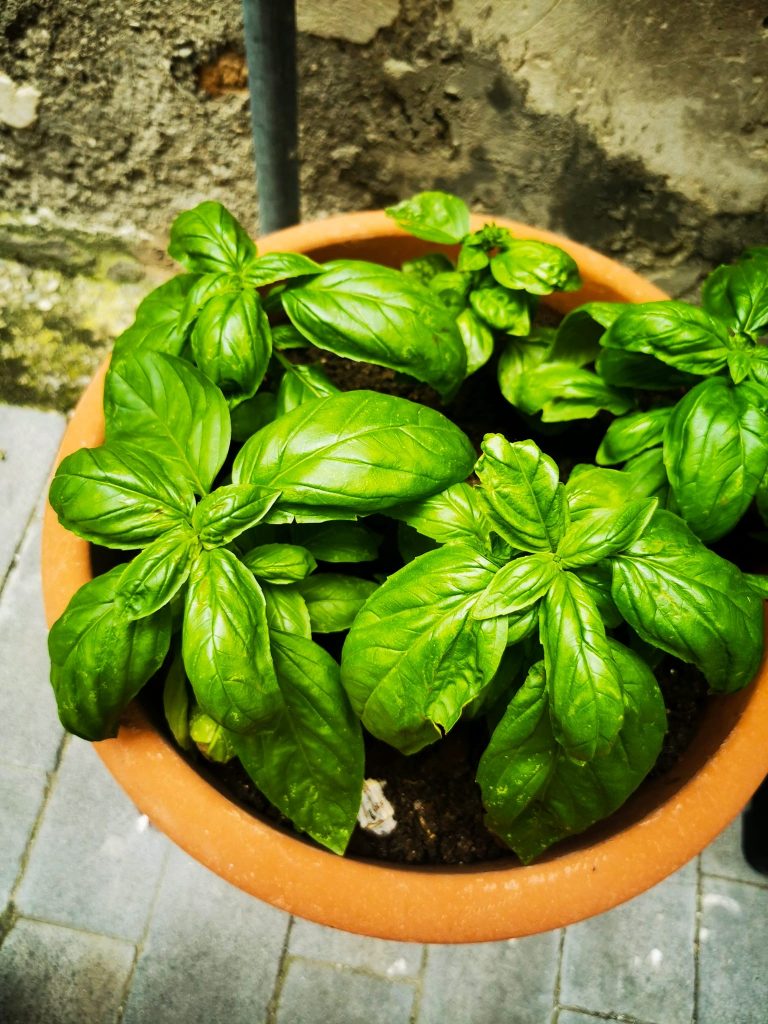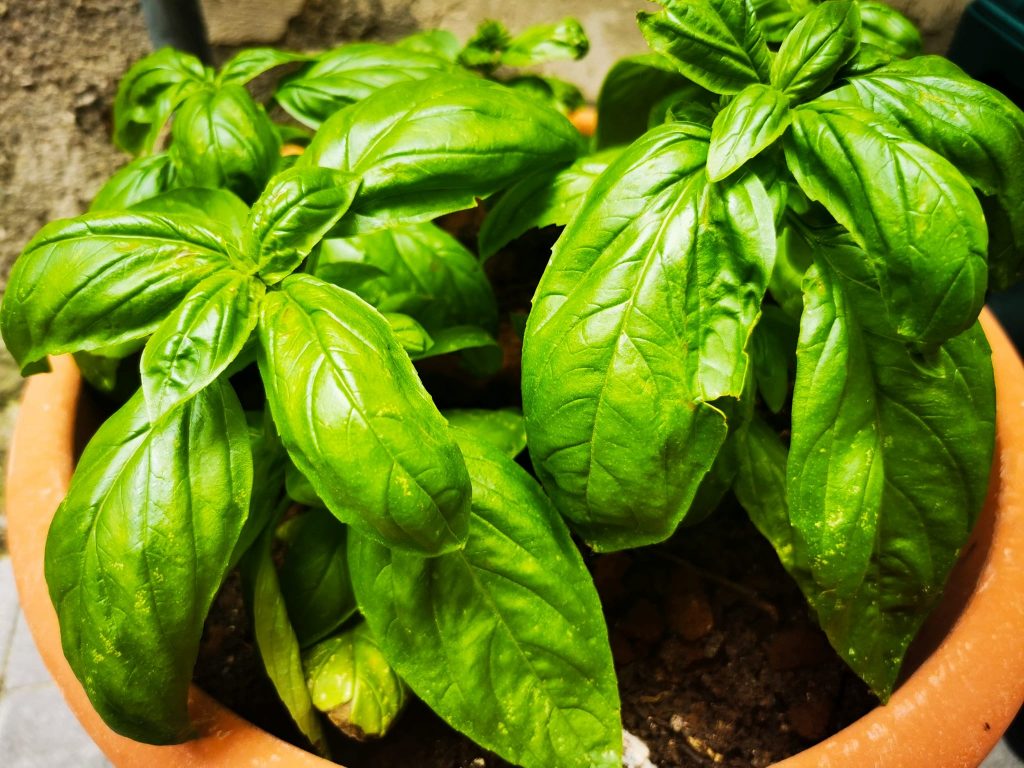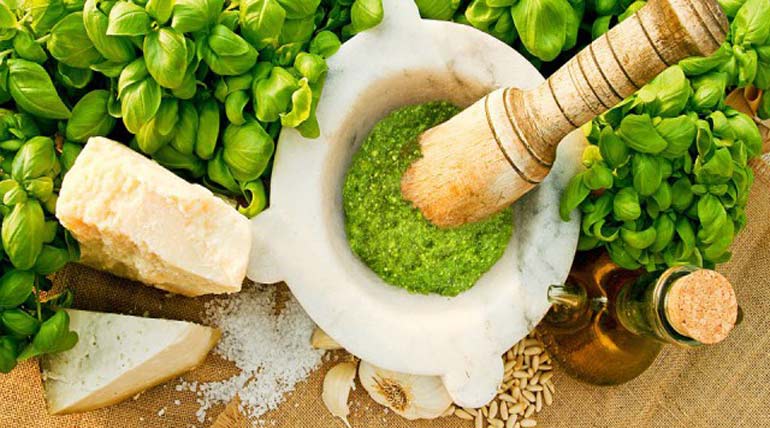History of Basil Leaves
Basil plants have been taken from India to the Mediterranean coasts thousands of years ago. Basil has a long and interesting history. The name basil is actually derived from an old Greek word “basilikohn,” which translates to “royal.” This fact illustrates that basil was held in quite high regard by many ancient cultures around the world, both for its great taste and its health benefits. This high regard for basil continues to this day, with basil being a symbol of love in Italy and one of hospitality in India.
Basil and symbols
For the ancient Greeks and Romans the herb was a symbol of malice and lunacy. In French, semer le basilic, “sowing basil,” means “raving”. Pliny, the celebrated first century AD Roman scholar, considered it to be an aphrodisiac and it was given to horses during the mating season. In Italy, basil symbolized love; when a lady left a pot of it in her window it was a signal that her lover was welcome. In Romania, a young man was considered to be engaged if he accepted a sprig of basil from a young lady. Basil has traditionally been given as a good-luck present to new homeowners. This is possibly why a modern custom has developed which maintains that basil will attract customers to a place of business if a sprig of the herb is placed in the cash register.
How to grow Basil
It is a tender low-growing herb that is grown as a perennial in warm, tropical climates, or as an annual in colder climates. It can be planted out in late spring/early summer, when there is little risk of frost. It fares best in a well-drained sunny spot. Although basil will grow best outdoors, it can be grown indoors in a pot. Like most herbs, it will do best on a south-facing windowsill (in the Northern Hemisphere). It should be kept away from extremely cold drafts. It grows best in strong sunlight. A greenhouse or cloche is ideal if available. In Italy basil finds the perfect climates in Liguria, northern region facing the sea, but it grows easily in every Italian region especially in the South.

Photo Mila Caserio
Taste and Aroma of Basil
A fresh basil leaf eaten directly from the plant has an initial subtle peppery flavour. The taste then evolves into a slightly sweet flavour and also has a delicate menthol aroma as well.
Medicinal Properties
Basil is thought to have significant health effects, particularly in improving the health of the cardiovascular system. In for strong eyesight and healthy skin and hair. Basil contains high concentrations of carotenoids like beta carotene, and these substances are converted to vitamin A within the body. Beta carotene offers even more benefits than vitamin A alone, and it is known to be a powerful antioxidant. Antioxidants are important because they help prevent the cell damage that occurs from so-called free radicals. Free radicals are a natural part of the cell cycle, and they cannot be prevented. However, it’s possible to mitigate the damage done by these free radicals by eating a diet that is rich in antioxidant vitamins like beta carotene.

Photo Mila Caserio
Ingredients
• 1 (32 fluid ounce) container chicken broth;
• 1 (14.5 ounce) can diced tomatoes with juice;
• 1 (14.5 ounce) can diced tomatoes with garlic and onion;
• 1 cup half-and-half cream;
• salt and pepper to taste;
• 2 tablespoons basil pesto.
Directions
1. Pour chicken broth into a large saucepan, and bring to a boil. Boil until reduced by about 1/3.
2. Pour in both cans of the tomatoes, and return to a simmer. Pour in the half-and-half, and turn heat to low. Simmer for 15 minutes. Puree in batches in a blender, or use an immersion blender in the pan. Season with salt and pepper to taste. Ladle into bowls, and swirl in a spoonful of pesto before serving.
Ingredients
• 2 cups fresh basil leaves;
• 4 cloves garlic, minced;
• 1/4 cup olive oil;
• 2 ounces pine nuts;
• 1/2 cup grated Parmesan cheese;
• salt and pepper to taste;
• 1 pint light cream.
Directions
1. In a food processor, combine basil and garlic. Begin processing, and pour in olive oil in a thin stream. Process for about 40 seconds, or until mixture begins to emulsify. Add pine nuts and Parmesan, then blend for 1 minute.
2. Heat cream in a saucepan over low heat until simmering. Pour 1/2 of the hot cream into the processor with basil pesto, and pulse for 20 seconds to incorporate. Pour mixture back into cream, and simmer for 5 minutes, or until thickened.
Ingredients
• 1 1/2 cups baby arugula leaves;
• 1 1/2 cups fresh basil leaves;
• 2/3 cup pine nuts;
• 8 cloves garlic;
• 1 (6 ounce) can black olives, drained;
• 3/4 cup extra virgin olive oil;
• 1/2 lime, juiced;
• 1 teaspoon red wine vinegar;
• 1/8 teaspoon ground cumin;
• 1 pinch ground cayenne pepper;
• salt and pepper to taste.
Directions
1. Place the arugula, basil, pine nuts, garlic, and olives in a food processor, and chop to a coarse paste. Mix in olive oil, lime juice, vinegar, cumin, cayenne pepper, salt, and pepper. Process until well blended and smooth.
Ingredients
• 1 1/2 pounds salmon fillets, cut into 1 inch cubes;
• 1/3 cup pesto;
• 2 tablespoons butter;
• 2 shallots, finely chopped;
• 1 cup uncooked long-grain white rice;
• 2 1/2 cups fish stock;
• 2/3 cup dry white wine.
Directions
1. In a medium bowl, toss salmon fillets in pesto to coat.
2. In a medium saucepan over medium heat, melt butter, and saute shallots until tender. Stir in rice, fish stock, and wine. Bring to a boil. Reduce heat, cover, and simmer 15 minutes.
3. Without stirring rice, place salmon in the saucepan. Cover, and continue cooking 25 to 30 minutes, until rice is tender and salmon is easily flaked with a fork.

